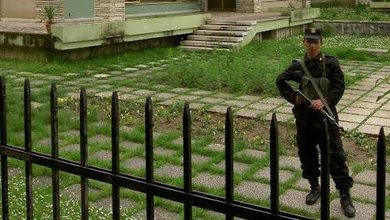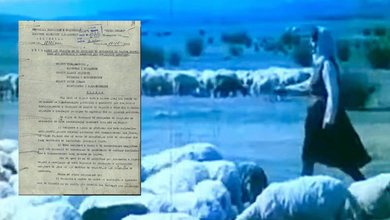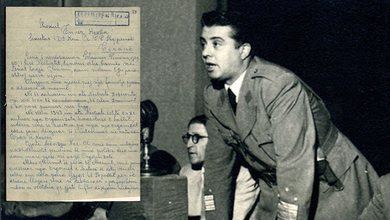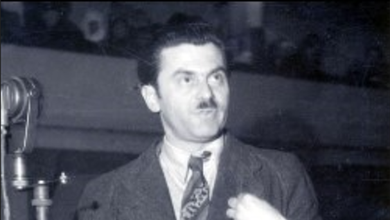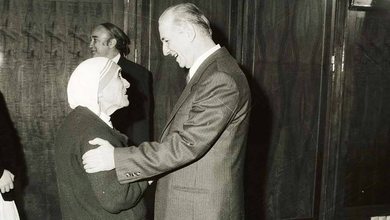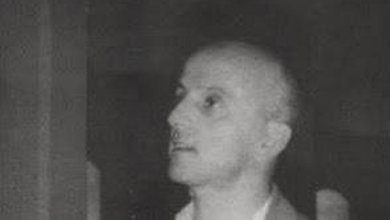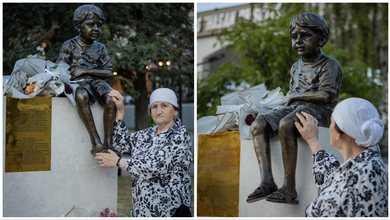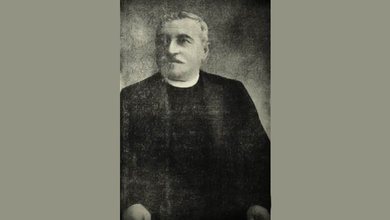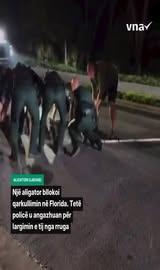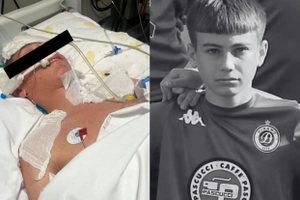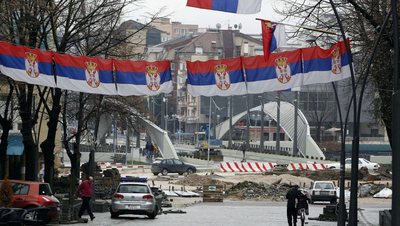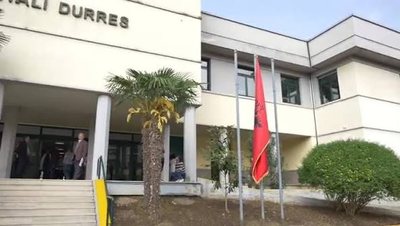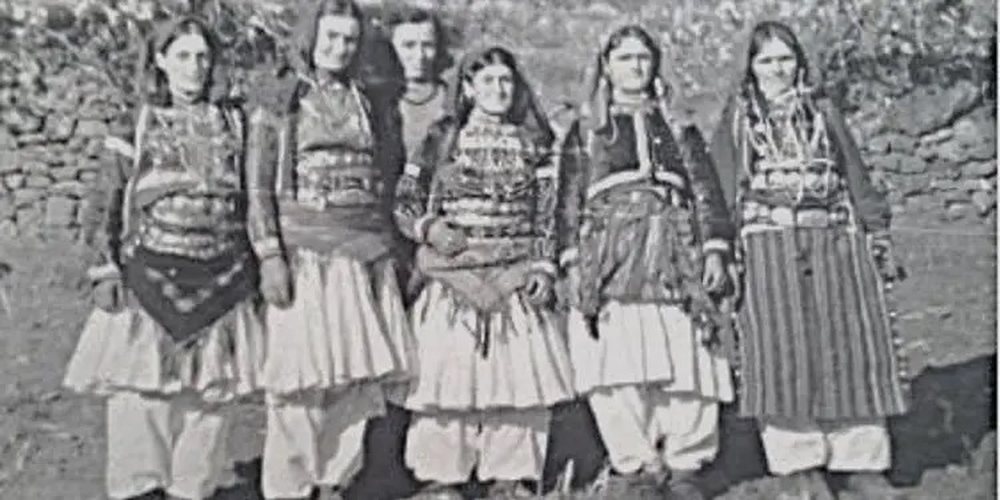
Family members of Azis Biçaku, part of persecution and torture spanning several decades, shocking testimonies of survivors!
In 1945, his family, consisting of Aziz's two wives, his 11-year-old son Hysniu, his three daughters, Isuf's wife and their three-year-old son Ilir, were interned in labor camps in Berat and Kuçova.
They stayed there for 4 years. In these Stalinist camps, where thousands of persecuted families from all over the country were concentrated, women, young and old, also worked, performing heavy work such as transporting stones, digging soil, etc. In 1949, they were removed from there and sent to the infamous Tepelena camp.
For the suffering and macabre life in this cruel camp, I have contacted the surviving living witnesses; Ilir Isuf Biçaku, Faik Halil Alla, Sheme Muzhaqi, Shefqet Dobra, Fatime Bajraktari (Biçaku), Faik Kasa, as well as Xhevdet Shuaipin, the latter from the village of Milec in Ersekë.
In the Tepelena prison camp, they were placed in wartime Italian barracks, men and women together. “In one shed,” they say, “there could be over 500-600 people.” They had pieces of old boards for bedding. Each family was assigned a place, calculating 50 cm per person.
“We were standing there like bullets in a magazine,” says Ilir Biçaku, who was only 6 years old when they went there. All surviving witnesses describe the horrors of the camp, some of which I describe below; Ilir Biçaku recounts that the bathrooms were about 200 meters away.
Only 400 grams of bread per person per day was the ration. The bread smelled. It was made with corn flour, ground from warehouse waste. For a long time they ate only dry bread. Later they started cooking a fat-free soup. They ate from the cauldron, “cauldron dish” they called it. In line, everyone passed in front of the cauldron, with an aluminum bowl in their hand, where they were poured a ladleful of soup, which could not possibly be called a dish.
"There," he says, "would be a grain of rice or beans floating around. In many cases, worms could be seen in it. This was the soup that kept their spirits alive. Many of the people fainted from lack of food. Diseases wreaked havoc. In all these years, they never saw the color and warmth of fire, they never saw the free washing.
They didn't know what clothes were. From 1945 to 1954, they hadn't had a single penny. Mothers were clutching their bellies to give their children a little more than the 400-gram ration of bread. Lice and bedbugs were crawling like clouds on the clothes. Every day people were dying of hunger. A woman was killed by a landmine explosion. She had gathered some dry thorns and lit a fire to heat a pot with two rags to wash.
The territory was littered with war munitions. From 1949 to 1954, for five years, thousands of people from families opposed to the regime were held in this prison camp, surrounded by barbed wire and guarded day and night by guards. Most of them were women, children and the elderly, as the men had fled, been imprisoned or shot by the regime.
Here, Ilir Isuf Biçaku from the village of Letëm spent his childhood from 6 to 11 years old. There, in Tepelena, he started primary school. Initially, the police would take him to an improvised place for learning about 600 meters from the barracks. There were no textbooks or necessary learning materials. In later years, the children would go to school on their own.
Whereas, it was truly terrifying for these children, who numbered in the hundreds, who did not know why they were there, and who never filled their bellies with dry bread. And this is how Iliri, a survivor of the infamous Tepelena camp, describes it in his book of poetry titled: "Mes trysnisë", published in 2001.
TEPELENI
"Children still, I don't know why, 'Gaz', they ran and stumbled there,
Without mother, father, sister, brother, amidst troubles, the slaves were separated.
I walked, I ran, I don't know why, 'Gaz', I ran, they were obstructed there
In the wire netting, black hats, We live in extreme hunger.
Daughter, I got up, I don't know why, 'Gaz', running, they were blocking me there,
Life passed by, barbed wire, bayonets, without sun, without air.
I endured the pain, I don't know why 'Gaz' and the running were hindered there. No wire was broken, no thorn was broken, no water was drunk, no sky was seen."
………………………………………………………….
Ilir's mother was forced to go to work to carry wood in the forest. The cruel life of the camp was also experienced by other family members; his grandmothers, sisters and his uncle, Hysniu. And the latter, who was 15-16 years old, was taken to work.
After six years, in 1954, they were removed from Tepelena and interned in Savër in Lushnja. Here they were interned, not prisoners. Initially, they were placed in a large shed that had been a horse stable. “There,” Iliri said, “the heat and the cold came in; “as it pleased.”
The Biçaku family had to be at the entrance to the door, on the other hand they were forced to endure the trampling of people who went out at night. Later, they took four families together into one room of the barracks. Later, seven more barracks were built, in which they also placed several families together, which they took out of the former horse stable where they were initially placed.
Internment, among other things, had another evil, since every day you had to appear at the appeal, where the absences were recorded, as they were afraid that they would escape. Hysniu, in Savër, met Esma Xhydollari from the village of Ydënisht in Pogradec. She was also interned as a family. The Xhydollari family, in 1944, had their houses burned by the partisans. Her father, Selamiu, went on the run, to organize against the communist regime.
In an attempt to escape with the Pursuit Forces, he was wounded in Macukull i Mati and captured by soldiers. He went to trial and was initially sentenced to be shot, then the verdict was given to 101 years in prison, while he served 12 years. Hysniu Biçaku married the noble daughter of Selamiu in 1965. He had three children with her, two daughters and a son, Ardian. Azis Biçaku's daughters also married.
The eldest was married sooner, to the Qoshi tribe in Zgosht. She spent some time in exile. Menduhia, the second sister, was engaged to Xhevit Dosku, the son of Shahin. After several requests from Aziz and Menduj Dosku, she was released. In 1951, she was in Letëm. They were staying in the house of Ahmet Hoxha's wife. The latter was shot by partisan forces after Aziz's houses were burned.
There, go Azis Dosku, Xhevit's uncle, Menduj, his son, first cousin to Xhevit, Meremja, the wife of Shahin, who was Xhevit's stepmother. They take their bride Menduhia, without a wedding, and bring her home. Thus, Xhevit married Dosku, while Menduhia also escaped from exile.
Fatima, the youngest daughter of Azis Biçaku, who went through all the camps, married while in Savër, to Skënder Bajraktari, from Hoti, Shkodra. The latter is the only one of Azis Biçaku's children who is still alive today. Iliri, while in Savër, graduated from the Lushnja gymnasium (1958-1962), with teachers Ismail Turdiu, Liri Kazazi, Hajro Babameto, etc.
Many prominent intellectuals were also interned in Savër, such as Lazër Radi, Hamit Kazazi, Dragushe Efovia, Tomorr Dosti, the Mirakaj family, the Kolgjini family, etc., who suffered internment after they had been released from prison. “Under the tutelage of these intellectuals,” he said, “we embarked on the path of knowledge, especially literature, reading over 2,000 novels during the years of internment.”
His dream was to become a painter. One day he competed for this branch and won, but his dream was dashed, after they did not accept him to continue his studies. The dictatorship destroyed this rare talent, working as a farm worker and bricklayer, but he never put down his books. In 1967, he married Fatbardha Çepelen, from Roskovec, who was also interned, and came from a family of persecuted people, with her father and uncle sentenced to 10-15 years in prison.
In 1988, he was given a brick room in a house in Savër. Oh my god! He couldn't believe it. Meanwhile, Ilir never lost hope that one day he would return to painting. With the overthrow of the dictatorship, his dream came true. In 1990, the persecuted and belittled Ilir Biçaku was elected village head in Savër.
He left Savra in 1992. In 1993, he worked as an officer at the Lushnja Police Station, performing duties in its various sectors. Meanwhile, in 1990, he began painting. He has participated in two auctions of Albanian painting at the National Gallery of Arts (2001-2005).
In the painting competition that was opened on the occasion of the 100th anniversary of Independence, Iliri was among the 16 winners, where he won the right to present 3 paintings, portraits from his life. Another event in Iliri's life is worth mentioning. After the collapse of the dictatorship, Iliri lived with his children, his wife and his mother in poverty.
Now, his father Isufi, who had separated from him in 1945, when he was only 3 years old, comes from Belgium. A longing and very joyful meeting. They also went together to Letëm, his beloved birthplace, where they stayed for a few days with many relatives and friends.
I met Azis Biçaku's daughter and last child, Fatime Bajraktari, who is the only one from the first generation of this family tree who is still alive today, on September 1, 2019, in the city of Lezha, where she lives. Fatime is 82 years old today. She often goes to Belgium, spending a lot of time there, where she has two sons and a daughter, while she lives with her other daughter in Lezha. It was an impressive meeting.
From the memories received from contemporaries about Azis Biçaku, it seemed that she was very similar to him. Attentive, calm and confident in her answers during the conversation, Fatimeja radiated maturity and culture. It seems that the long years of suffering under the dictatorship had not defeated her, while married life in the Bajraktari family had further tempered and strengthened the innate virtues and qualities of a proud highlander.
Fatime Azis Biçaku was born in the village of Letëm in 1937. She says that she had little idea of her father, as she was only 7 years old when her family was deported. Until 1949, they lived in Berat, and then in Turan and Tepelena. She spent her early teenage years in Tepelena, from 12 to 17 years old.
Like hundreds of other girls in the camp, Fatimeja experienced hunger, contempt, scorn and a miserable life in the barracks of the macabre camp. In 1951, they were temporarily released and came to Letëm. They stayed for 5-6 months in Ahmet Hoxha's house, after, as is known, their houses had been burned.
They thought they had escaped, but no! They were taken by force again and taken to Tepelena, inside barbed wire, surrounded by armed guards. After Tepelena comes Savra. There, they initially placed several families together in a barracks. “They were restricted in terms of marriage,” Fatimeja recounts. “There, around 1958-59, an order came out that internees could marry each other inside the camp.”
Fatimeja was now 22 years old. In 1959, she married Skënder Bajraktari. His father, Kadri Bajraktari, had served several years in prison, and had been brought from Tepelena with his family to Savër. His brother's family, Mul Bajraktari, was also with him.
Fate decreed that the brave and noble daughter of Azis Biçaku would marry the son of the Bajrak family, with the most patriotic and freedom-loving traditions of the Greater Highlands. They were interned in Savër until 1965. Then, they were allowed to leave. Their family settled in Shtoi, Shkodra, where they stayed with Skënder's sister, who was living there. After a year, they left for Hoti, to settle in their home.
They stayed there for two years, but they were not meant to stay any longer in the house they so desired. The ancient, legendary three-story tower, with many rooms, where dozens of highland assemblies had gathered, had been burned down twice by Serbo-Montenegrin forces, while the family had rebuilt it better and stronger.
The communists did not burn it, but they set their sights on using it. In 1967, an agricultural cooperative took it over, where it was used at times as a school and at times as a warehouse. The family members were forcibly evicted. They left, utterly despondent, with their heads held high, never to return during the years of the dictatorship. Their family settled in Bushat, where they remained until the fall of the communist regime.
Skënder and Fatime Bajraktari, gave birth to and raised 4 children, two boys and two girls. With countless work and sacrifices, persecuted and kept under constant surveillance by the hyenas of the dictatorship, they remained dignified and proud, faithfully preserving and protecting the traits of nobility inherited from their ancestors. Skënder passed away in 2002.
While I was writing about the Biçaku family (it was May 2018), I saw the announcement on the website that Ilir Biçaku had passed away from a serious illness. I felt very hurt, not only about his death, but also because I wanted Ilir to be acquainted with my book, where I describe some of the suffering of his family and relatives.
Since I have contacted seven survivors of the infamous Tepelena camp, six of whom are from Librazhd, I would like to also describe the stories of Xhevdet Shuaipi, who is from Erseka. I met Xhevdet, originally from the village of Milec in Erseka, in Elbasan on March 2, 2017, at the home of a friend of mine from Librazhd. Knowing that he had been interned, I asked him if he had been in the Tepelena camp and if he knew Ilir Biçaku.
"Yes, - he told me, - I was with him, in Tepelena and Lushnja. Iliri was very passionate about painting, but he was not allowed to either get an education or practice this profession that was so dear to him"! There are chilling moments in Xhevdet's stories. Initially, he told me the circumstances in which his family was interned. His father, Pajazit Shuaipi, called Pajazit Mileci in the Kolonja region, fled to Greece in 1948, because they imposed unbearable taxes on land and livestock. / Memorie.al



